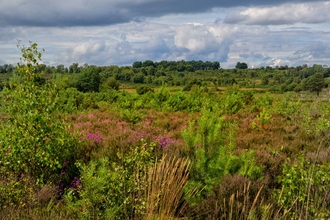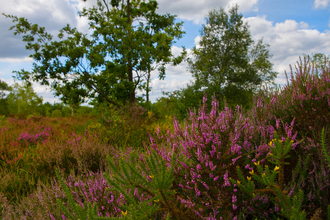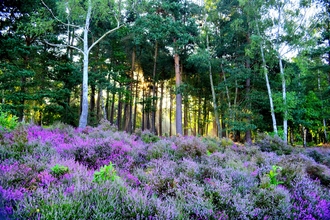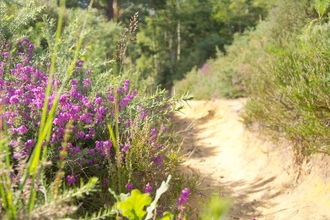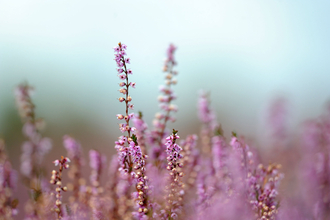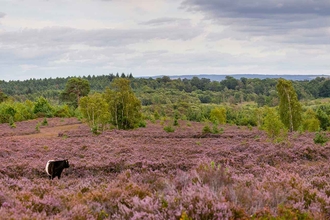If you venture out onto a heathland on a summer evening, you might be greeted by an unusual sound. It could almost be mechanical. A long, drawn-out reel, like the purring of a small engine. It runs on and on for minutes at a time, occasionally shifting gear, a slight change in pitch: ‘errrrrrrrrrrr….urrrrrrrrrrrr’. Finally, at some unseen signal, it ends, either stopping suddenly or winding down as if the engine were failing.
This is the song of the nightjar, known as churring. It might not have the complexity of a warbler, or the reputation of a nightingale, but it’s no less emotive. It’s a sound to spark the imagination. What could possibly produce such a noise? Since nightjars only stir at dusk, they’re more often heard than seen. This has always given them an air of mystery, leading to some strange nicknames and even stranger myths.
Notorious names
The stories surrounding nightjars have not always been flattering. One of their earliest names was “goatsucker”. It was believed they set upon goats under the cover of darkness, drinking from their udders – somehow leading to the goat becoming blind. This myth was echoed by two of the ancient world’s most eminent naturalists, Aristotle and Pliny the Elder.
Luckily for goats across Europe, there is no truth to this rumour. Nightjars were likely found around livestock as they hunted for moths and other insects. However, a good story rarely dies. The goatsucker legend lives on in the nightjar’s scientific name, Caprimulgus europaeus. Capra means ‘nanny goat’, mulgere means ‘to milk’.
Another unflattering name in the nightjar’s history is “lich fowl”, which essentially means corpse bird. I’m not sure what they did to deserve such an insult, but it’s likely due to their nocturnal nature. Anything active at night was surely up to something suspicious – several myths associate them with lost souls. Their other names of “fern owls”, “dewfall hawks” and “nightchurrs” are much more appealing, like the birds themselves.
Shadows and sound
Their mechanical churr is not the only note in their repertoire. Listen long enough and you’ll hear some excited, frog-like chirps as birds call to each other. You might also hear a series of percussive cracks, like the slow clapping of hands. This is the male’s ‘wing-clapping’ display, his ultimate party trick to impress nearby females. He flies through the sky, throwing his wings sharply upwards and down again, producing a ‘clap’ each time. Exactly how this sound is made is still a bit of a mystery. The wings don’t appear to touch, so it’s not thought to be a traditional ‘clap’, but is somehow produced by the movement of the wings through the air.
If you’re really lucky, you might catch a glimpse of the nightjar itself. A shadow amongst the shadows, a silhouette against the darkening sky. About the size of a mistle thrush, with a long tail and pointed wings. They fly more like a moth than a bird, twisting and turning suddenly, unpredictable. They circle and swoop as they scoop insects from the air. Their tiny beaks open wider than you’d think possible, stretching their mouth into a cavernous maw, a flying trawler. Any aerial insect is fair game, from beetles to mosquitoes, but they seem to show a preference for larger moths.
A summer sensation
We only have a few months to enjoy these charmingly cryptic creatures. Nightjars are summer visitors to Britain. By autumn, they’ll be on their way south, crossing two continents as they return to their wintering grounds. Tracking studies have found that they favour scrub-filled grasslands in the Democratic Republic of Congo.
But where should you go to hear the churr of a nightjar yourself? They are most common in southern England, with good populations on many of Surrey's heathland sites. It's important to stick to paths and keep dogs on a lead when exploring these places, as nightjars nest on the ground.
Encountering a nightjar is always an unforgettable experience and the best time to hear their otherworldly song is at dusk on a warm midsummer evening at sites including Chobham Common, Ockham & Wisley Common and Whitmoor Common.
Written by Tom Hibbert


